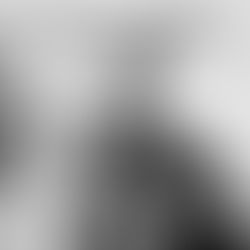Jolande Jacobi : The Individuation Process
- InLibroVeritas

- 4 févr. 2024
- 6 min de lecture
Dernière mise à jour : 20 août 2024
Heracles’ 10th Labor
[In order to accomplish his tenth labor, to steel the cattle of Geryon, Heracles is sailing towards the island of Erytheia in the great golden bowl which the Sun-god, Elios, loaned him.]
Jolande Jacobi
The Way of Individuation
The Archetype of the Individuation Process
The individuation process, as a universal law of life, exhibits an archetypal pattern which remains more or less constant and regular. The signposts and milestones on the way are specific archetypal contents and motifs whose sequence cannot, however, be determined in advance and whose manifestations vary from individual to individual. The personal equation is also decisive for their understanding and assimilation. For "the method is merely the path, the direction taken by a man; the way he acts is the true expression of his nature."
The symbolism of birth, life, death, and rebirth is part of the pattern of the individuation process. From the remotest times man has tried to express it in the imagery of myths and fairytales, in rituals and works of art, to capture the archetypal events in forms that are valid for all men. Most of these myths and rituals have a phylogenetic, i.e., collectively valid, aspect as well as an ontogenetic one relating to the life-history of the individuals.
Many hero-myths, for instance, are a paradigm not only of the way of individuation of a single individual, but also of the evolution of consciousness in the course of history. The mythological fate of the hero, who was often a "sun-hero", symbolizing the rising and setting of the sun, may be regarded as a parallel of the archetypal development of the ego or consciousness of a single individual as well as of a group-consciousness. The evening, the sinking into the darkness of night, was the "death" of the sun; its rising in the morning, renewed, its "rebirth". For every rebirth is preceded by a death.
The fact that men speak of rebirth at all, that there has always been such a concept, allows us to infer that a store of psychic experiences designated by that term must actually exist, although not directly perceivable by the senses. This store of experience is a psychic reality substantiated by a consensus of opinion among all peoples at all epochs. "Rebirth is an affirmation that must be counted among the primordial affirmations of mankind." It is not, however, always used in the same sense. In the present context it means psychic rebirth within the lifetime of the individual, a renewal of personality in the sense of its growing completion, its tendency towards wholeness. Consequently, there can be a rebirth of the suppressed, unlived "nature" in man, as well as a rebirth of the neglected and undeveloped "spirit", both of which must be sought in order to round out the individual into a whole.
But it will always be a "spiritual work" in so far as the cooperation of consciousness is the indispensable condition for both. Also, for most Westerners renewal in the sense of the Christian ideal will mean reaching a higher spiritual level, a casting off of the fetters of a technicized world. Even so, rebirth can only proceed step by step, affecting the individual first in one part and then in another, until it finally encompasses his whole life. That is to say, the great arc of life whose ultimate aim is the rebirth of the whole personality will consist of many little "rebirth moments" and "rebirth events". Rebirth is not confined only to the analytically assisted individuation process, it relates also to the "natural" one.
(...)
Both kinds of individuation process, in their various forms, can be found in numerous myths and legends which offer more or less apt analogies to the way of individuation. In the "natural" individuation process, which runs on without the intervention of consciousness, as well as in the "methodically guided" one, which is consciously worked through, a wealth of more or less striking parallels can be adduced with the symbolism of mythology. In the myths which have the daily course of the sun for their theme, whether it be Jonah in the whale, Herakles in the sun-vessel, the Egyptian goddess Nut, who devours the sun every evening and gives birth to it every morning, the natural individuation process is depicted symbolically in its eternal cyclic recurrence, as manifested in the alternation of day and night, in the succession of the seasons, in the rising and passing of the generations, etc.
Here, as in all unconscious processes, there is succession and recurrence without any lasting transformation; the process is bound to the laws of nature. Unlike the consciously experienced individuation process it is not an opus contra naturam, except in the special case of an active life courageously lived and consciously shaped. Whenever our consciousness intervenes and takes an active part, renewal and differentiation will follow. Probably every process of psychic development in individuals with a relatively unconsolidated ego is subject only to a "natural" individuation. Yet the possibility of conscious transformation, of being reborn again and again until full psychic development is reached, seems to be laid by fate on those who already bear in themselves a brighter light of consciousness, and this light will gain in strength and splendour as a result of their psychic transformation and renewal.
Not only the two forms of individuation, the "natural" and the "methodically assisted", but also its two main phases, that of the first and that of the second half of life, have their mythological analogies. Sometimes only the first phase, sometimes the second, and sometimes both are symbolically represented. Although the whole process plots the course of conscious realization, the first phase aims at the crystallization of a stable ego, and the second at the achievement of a permanent relationship between the ego and the Self. Accordingly, each phase is characterized by a more or less marked variation of the archetypal ground-pattern.
Most of the creation-myths, too, when looked at psychologically, can be understood as symbolical representations of the original coming of consciousness, as its birth, so to speak, which happens for the first time in the psyche of the newborn child. When, for instance, in the Babylonian creation-myth, to name but one of many, the hero Marduk, who stands for the sun, kills and dismembers with his sword, symbolizing the sun's rays, the dragon Tiamat, the embodiment of chaos and the primal darkness, and the world arises from the parts of its body, this is an analogy of the creation of the world and the coming of consciousness. The sword of light is plunged into the darkness of unconsciousness, the darkness is dispelled, and objects take shape. They are "born", to so speak, they can now be seen, discriminated, and named, they are perceived and apprehended by consciousness. This creation of the world as the coming of consciousness is an event that is ceaselessly repeated in the life of man. Every time it happens a little bit of new territory, of new knowledge, a newly won insight, is added to the field of consciousness, which is "reborn" in more comprehensive form both in the natural and in the analytically assisted individuation process.
The central content of the numerous myths in which a dragon or some other monster is dismembered is the acquisition of an independent ego-personality, for which purpose the "devouring, terrible mother" must be overcome. If the individual is to develop and consolidate his ego, the "mother" as the symbol of the darkness of unconsciousness must first be destroyed by the bright light of youthful consciousness, symbolized by the sun's rays or by the arrow, sword, or club. In the second phase of the individuation process it is no longer a question of destruction but of a descent into the dark realm of the unconscious, symbolized by the devouring maw of the death-dealing monster. There, in the depths, in the creative womb of the "mother", and with the help of the strong light of consciousness, is found the "treasure hard to attain", "the precious hoard" — designations for the Self — which the hero must bring back to the light of day.
This journey to the underworld, the so-called Nekyia [The journey to Hades, or descent into the land of the dead,"Nekyia" is the title of the 11th book of Homer's Odyssey], is the model on which most of these myths and fates are based. We find it as the descent into hell in the life of Christ, preceding his resurrection. The creation of the world through the dismemberment of the maternal dragon is therefore the archetypal ground-pattern for the task of the first phase of individuation; being devoured by it, to emerge matured, transformed, and reunited with the Self, is the mark of the second.
(...)

















